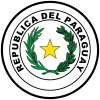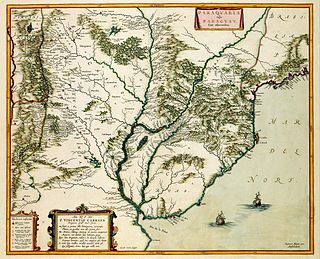
The history of Paraguay encompasses thousands of years of human habitation. Both agricultural and nomadic Guaycuruan lived in the region at the time of the Spanish Conquest. It became a relatively neglected part of the Spanish Empire due to its isolation and lack of mineral wealth, nonetheless a small group of Spanish settlers came to reside in the area, increasingly intermarrying with native women to produce a mestizo population. In the 17th and 18th centuries, Jesuit missionaries organized the natives into planned communities known as reducciones, and the experiment gained notable attention in Enlightenment Era Europe.

Alfredo Stroessner Matiauda was a Paraguayan army officer, politician and dictator who served as President of Paraguay from 15 August 1954 to 3 February 1989. Stroessner led a coup d'état on 4 May 1954 with the support of the army and the Colorado Party, with which he was affiliated. After a brief provisional government headed by Tomás Romero Pereira, he was the Colorado Party's presidential candidate for the 1954 general election, and was elected unopposed since all other parties were banned from 1947 to 1962.

The National Republican Association – Colorado Party is a conservative political party in Paraguay, founded on 11 September 1887 by Bernardino Caballero. Since 1947, the colorados, as they are known, has been dominant in Paraguayan politics and has controlled the presidency since 1948 –notwithstanding a brief interruption between 2008 and 2013– as well as having a majority in both chambers of Congress and department governorships.
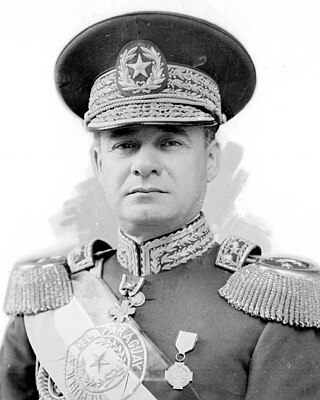
José Félix Estigarribia Insaurralde was a Paraguayan military officer and politician who served as the 34th President of Paraguay from 1939 until his death in a plane crash on September 7, 1940. He is most remembered for his previous role as commander in chief of the Paraguayan Army during the Chaco War, which resulted in an upset victory for Paraguay.

Higinio Nicolás Morínigo Martínez was a Paraguayan military officer and politician who served as the 35th president of Paraguay from 1940 to 1948, ruling as a military dictator.

Bernardino Caballero de Añazco Melgarejo y Genes was a Paraguayan military officer and politician, serving as a General during the Paraguayan War and later as President of Paraguay between September 1880 and November 1886. He was the founder of the Colorado Party in September 1887, the largest political party in Paraguay currently, along with the Liberal Party in second position.

Marcos Antonio Morínigo Fleytas was a Paraguayan politician who served as President of Paraguay in 1894.

Rafael de la Cruz Franco Ojeda was a Paraguayan military officer, politician and statesman who served as President of Paraguay after the February Revolution, from February 20, 1936 to August 13, 1937. He was the historical leader and founder of the National Revolutionary Party.
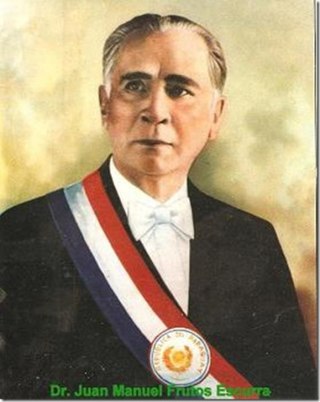
Juan Manuel Frutos was a Paraguayan lawyer and politician. He served as the 36th President of Paraguay on a provisional basis, from June 3, 1948, to August 15, 1948. Holding the position of President of the Supreme Court of Justice, he assumed as Provisional President of Paraguay after the resignation of Higinio Morinigo.

Juan Natalicio González Paredes was a Paraguayan politician and poet who served as President of Paraguay from 15 August 1948 to 30 January 1949.
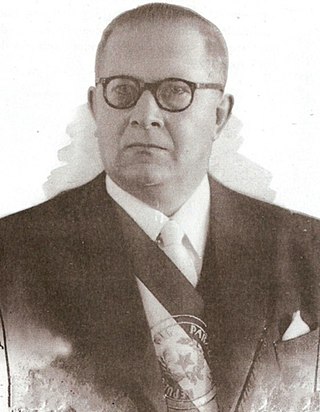
Felipe Benigno Molas López was 39th President of Paraguay from February 27, 1949 – September 10, 1949, when he resigned.

The Paraguayan Army is the ground force branch of the Armed Forces of Paraguay. It is organized into three corps and nine divisions, and several commands and direction. It has gone to war on many occasions, notably in the War of the Triple Alliance (1864–1870) against Brazil, Argentina and Uruguay; the Chaco War against Bolivia; and the ongoing Paraguayan People's Army insurgency.
Below is the timeline of Paraguayan history.
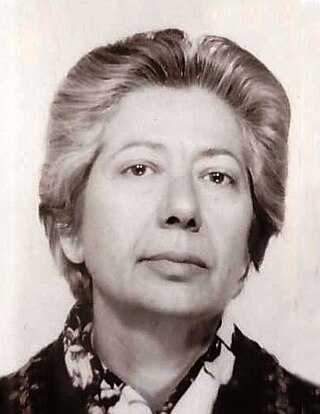
Carmen Soler was a Paraguayan educator, poet and member of the Paraguayan Communist Party. She was noted for being imprisoned and exiled several times for fighting against the dictatorship of Alfredo Stroessner.

The dictatorship of Alfredo Stroessner, colloquially known as Stronismo or Stronato, was the period of almost 35 years in the history of Paraguay in which army general Alfredo Stroessner ruled the country as a de facto one-party state under an authoritarian military dictatorship, from 15 August 1954 to 3 February 1989.

The Paraguayan Civil War (1922), took place between 27 May 1922 and 10 July 1923, within the borders of Paraguay. It started when supporters of candidate Adolfo Chirife attempted to forcefully restore the implementation of presidential elections canceled by President Eusebio Ayala. Chirife represented the so-called Constitutionalist or Schaererist side ideologically supporting liberal politician Eduardo Schaerer, while troops under Ayala were named Loyalists or Gondrists ideologically pledging allegiance to former President Manuel Gondra. The conflict concluded when Gondrist forces defeated the remnants of the Schaererist army in Asunción.

The February Revolution in Paraguay was a military coup d'état on February 17, 1936, that brought to power colonel Rafael Franco. The revolution marked the end of Liberal Party rule in Paraguay and started the ascendancy of military dictatorships that lasted for more than half a century.

The Guión Rojo was a Paraguayan paramilitary organization of the 1930-1950s, which was formed in 1942 as the paramilitary wing of the Colorado Party. It united supporters of Colorado leader Juan Natalicio González, far-right nationalists, anti-communists and adherents of Falangist and pro-fascist ideas. It played a prominent role under the dictatorial regime of the 1940s, in the civil war of 1947, the subsequent political struggle and the establishment of Alfredo Stroessner's dictatorship.

During the course of the 20th century, the Colorado Party of Paraguay set up several paramilitary organizations and militias in the country. They defended party interests and positions by force and actively participated in armed civil conflicts, playing a decisive role in the 1947 civil war. During the period of one-party rule in Paraguay, they were key components of the repressive apparatus of the dictatorship of Alfredo Stroessner. Politically and ideologically, these paramilitary groups stood on ultra-right and anti-communist positions, from traditionalism to fascism.
Antonio Campos Alum was a Paraguayan politician and head of the National Directorate of Technical Affairs, a law enforcement agency during the dictatorship of Alfredo Stroessner.
Sapienza, Antonio Luis (Helion, 2018). Aerial Operations in the Revolutions of 1922 & 1947 in Paraguay. The First Dogfights in South America.



















